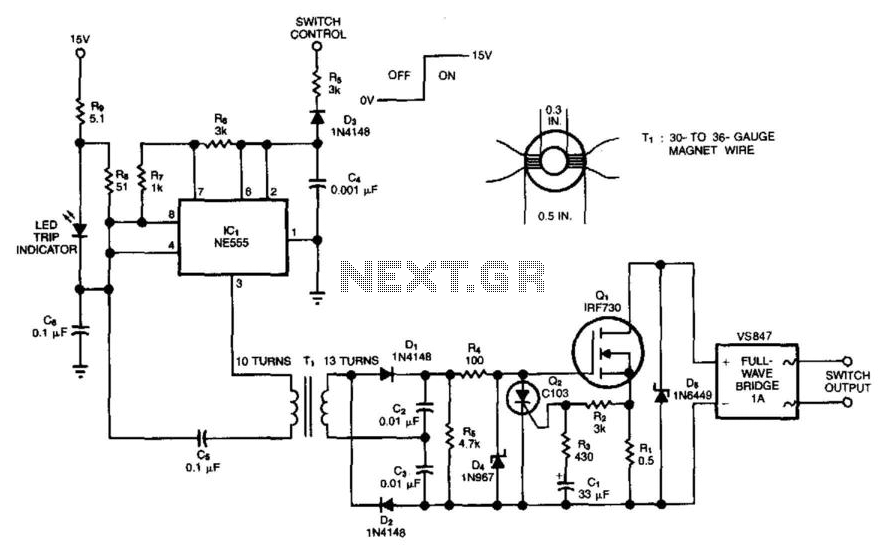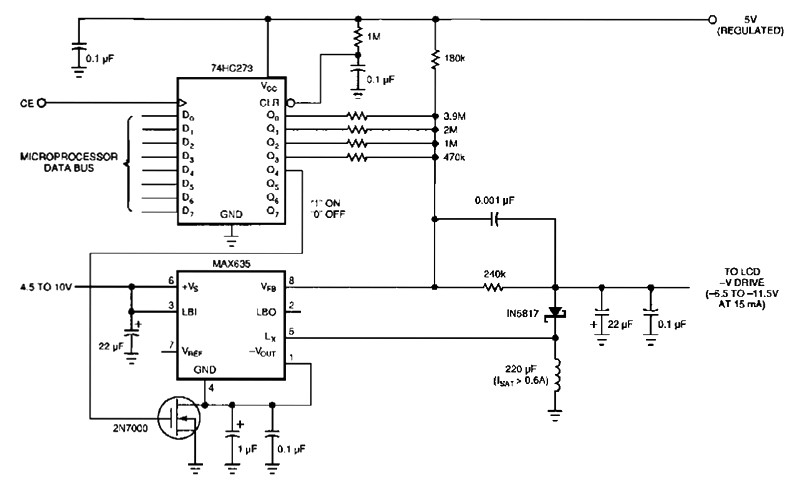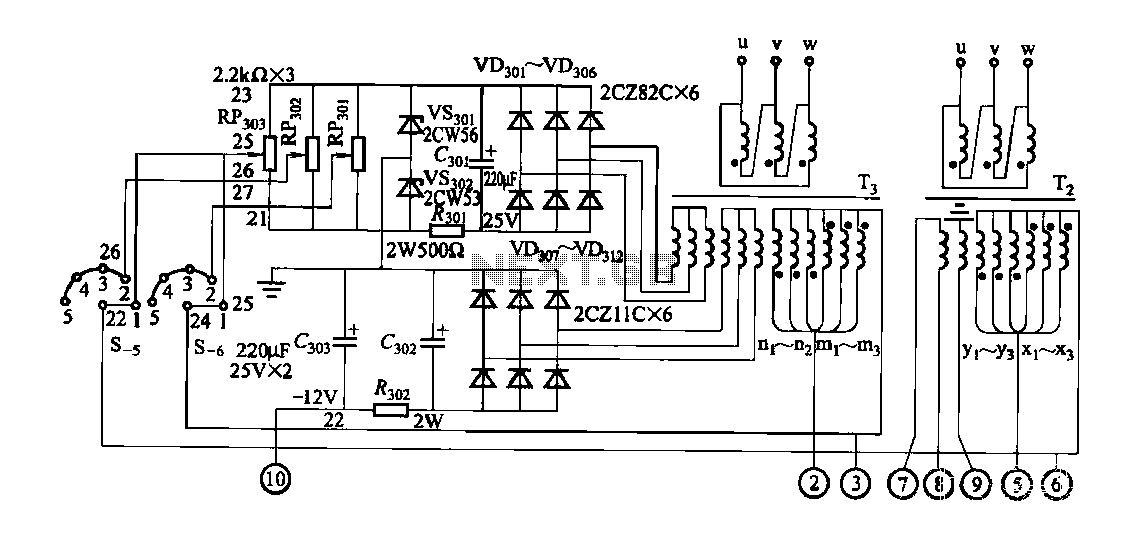
Low Ripple Power SupplyCircuit

Low Ripple Regulated Power Supply Circuit Diagram. This circuit can be employed in applications requiring high current with minimal ripple voltage, such as in high-powered class AB amplifiers where high-quality audio reproduction is essential.
The low ripple regulated power supply circuit is designed to deliver stable voltage while minimizing voltage fluctuations, which is crucial in sensitive audio applications. The circuit typically includes key components such as a transformer, rectifier, filter capacitors, and a voltage regulator.
The transformer steps down the AC voltage from the mains supply to a lower AC voltage suitable for the application. The output from the transformer is then fed into a rectifier, which converts the AC voltage to pulsating DC voltage. Common rectifier configurations include full-wave or bridge rectifiers, which enhance efficiency by utilizing both halves of the AC waveform.
After rectification, the pulsating DC voltage is smoothed using filter capacitors. These capacitors charge during the peaks of the voltage and discharge during the troughs, effectively reducing ripple voltage. The choice of capacitor values is critical; larger capacitance values provide better filtering but may also increase the circuit's response time to load changes.
Finally, a voltage regulator is employed to ensure that the output voltage remains stable regardless of variations in load current or input voltage. Linear voltage regulators, such as the LM7812 for 12V output, or switching regulators, can be used depending on efficiency requirements and thermal considerations.
Additional components such as heat sinks may be necessary for the voltage regulator to dissipate heat effectively, especially under high load conditions. Bypass capacitors placed close to the regulator's output can further enhance stability and transient response.
In summary, this low ripple regulated power supply circuit is an essential design for applications demanding high fidelity and stable performance in audio amplification systems. Proper selection and arrangement of components ensure optimal operation and reliability in delivering clean power to sensitive electronic devices.Low Ripple Regulated Power Supply Circuit Diagram This circuit may be used where a high current is required with a low ripple voltage (such as in a high powered class AB amplifier when high quality reproduction is necessary ). PARTS LISTR12.. 🔗 External reference
The low ripple regulated power supply circuit is designed to deliver stable voltage while minimizing voltage fluctuations, which is crucial in sensitive audio applications. The circuit typically includes key components such as a transformer, rectifier, filter capacitors, and a voltage regulator.
The transformer steps down the AC voltage from the mains supply to a lower AC voltage suitable for the application. The output from the transformer is then fed into a rectifier, which converts the AC voltage to pulsating DC voltage. Common rectifier configurations include full-wave or bridge rectifiers, which enhance efficiency by utilizing both halves of the AC waveform.
After rectification, the pulsating DC voltage is smoothed using filter capacitors. These capacitors charge during the peaks of the voltage and discharge during the troughs, effectively reducing ripple voltage. The choice of capacitor values is critical; larger capacitance values provide better filtering but may also increase the circuit's response time to load changes.
Finally, a voltage regulator is employed to ensure that the output voltage remains stable regardless of variations in load current or input voltage. Linear voltage regulators, such as the LM7812 for 12V output, or switching regulators, can be used depending on efficiency requirements and thermal considerations.
Additional components such as heat sinks may be necessary for the voltage regulator to dissipate heat effectively, especially under high load conditions. Bypass capacitors placed close to the regulator's output can further enhance stability and transient response.
In summary, this low ripple regulated power supply circuit is an essential design for applications demanding high fidelity and stable performance in audio amplification systems. Proper selection and arrangement of components ensure optimal operation and reliability in delivering clean power to sensitive electronic devices.Low Ripple Regulated Power Supply Circuit Diagram This circuit may be used where a high current is required with a low ripple voltage (such as in a high powered class AB amplifier when high quality reproduction is necessary ). PARTS LISTR12.. 🔗 External reference





